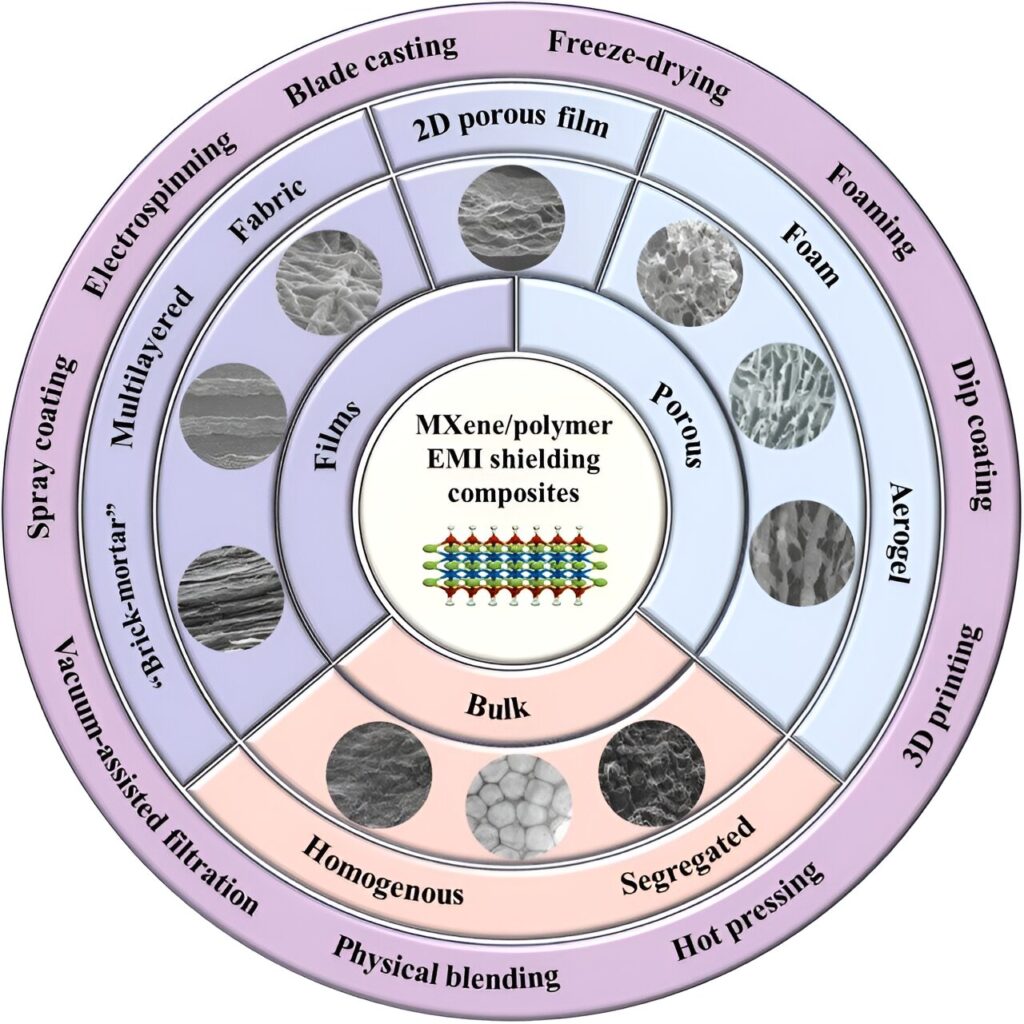by KeAi Communications Co.
With the booming development of 5th generation (5G) mobile networks, various electronic devices have been widely used to improve people’s standard of living. However, they also cause serious electromagnetic interference (EMI) and radiation, which has been known to affect the normal operation of electronic and electrical equipment, along with daily life and health of people.
In a review published in Advanced Nanocomposites, a group of researchers from China and Germany summarize the processing methods and structural design of polymer/MXene composites and their application prospects in the field of electromagnetic shielding.
Furthermore, they highlight the current challenges faced by polymer/MXene nanocomposites in EMI shielding applications and provide new ideas for the development and design of next-generation lightweight, high-performance EMI shielding materials.
“Specific processing routes can greatly affect the microstructure of composites, and different structural designs can improve the performance of composite materials or endow them with new functions,” explains the review’s senior and corresponding author, Xianhu Liu, a professor at the National Engineering Research Center for Advanced Polymer Processing Technology at Zhengzhou University.
“It is crucial to ensure a strong interface bonding between MXene nanosheets and polymer matrix during the preparation of composite materials, which will significantly affect the electromagnetic shielding performance and application stability of the nanocomposite.”
Liu added that therefore, studies on how to prepare polymer/MXene films and foams with excellent mechanical properties and flexibility are a research hotspot. Additionally, with the rise of wearable devices in recent years, there has been increasing interest in developing fabric-based electromagnetic shielding films.
“New processing technologies in recent years have also brought innovations to the manufacture of electromagnetic shielding composites. Although traditional processing (melt blending, hot pressing, blade coating and spraying, etc.) has been proven to successfully prepare composite materials with excellent electromagnetic shielding properties,” says co-corresponding author Xin Wang from the Institute of Polymer Materials at Friedrich-Alexander-University Erlangen-Nuremberg.
In particular, new technologies such as 3D printing have many advantages over traditional ones, including high-precision manufacturing of complex geometries, maximum material savings, design flexibility and customization.
“With the rapid development of intelligent equipment, electromagnetic shielding materials with a single function cannot fulfill the needs of human beings. Therefore, EMI shielding materials with multiple functions will have great application prospects, such as thermal conductivity, flame retardancy, and self-healing properties, and sensing performance, etc,” concludes first author Qingsen Gao.
“We believe that polymer/MXene nanocomposites are expected to usher in a new era of advanced materials with excellent EMI shielding capabilities. We hope that our research results can promote the further development of polymer/MXene nanocomposites.”
Provided by
KeAi Communications Co.


